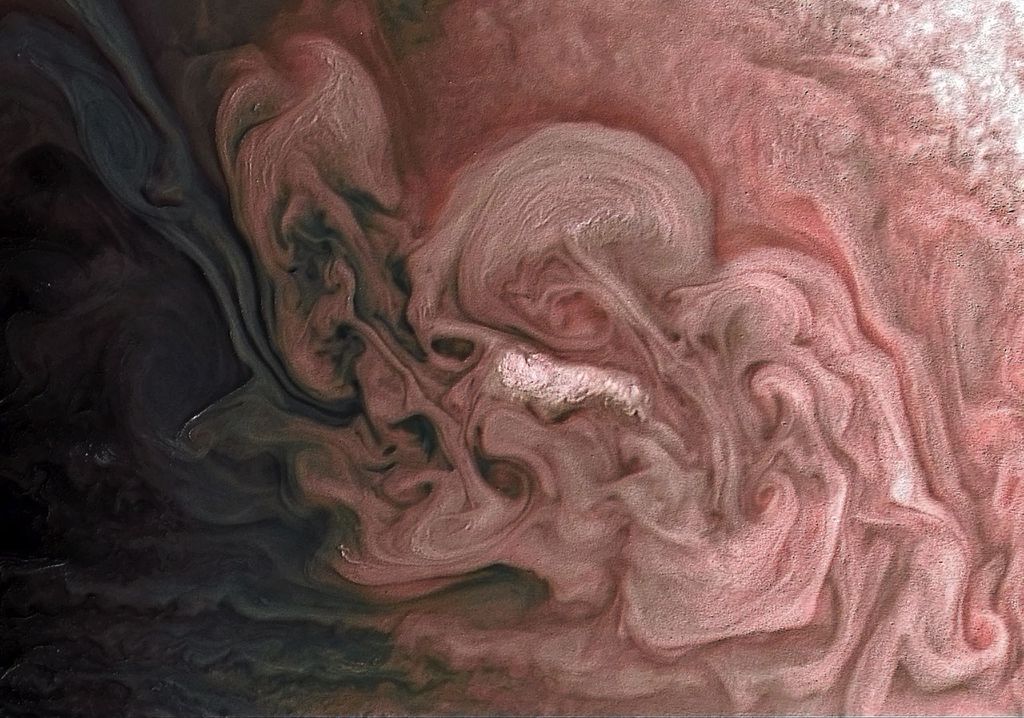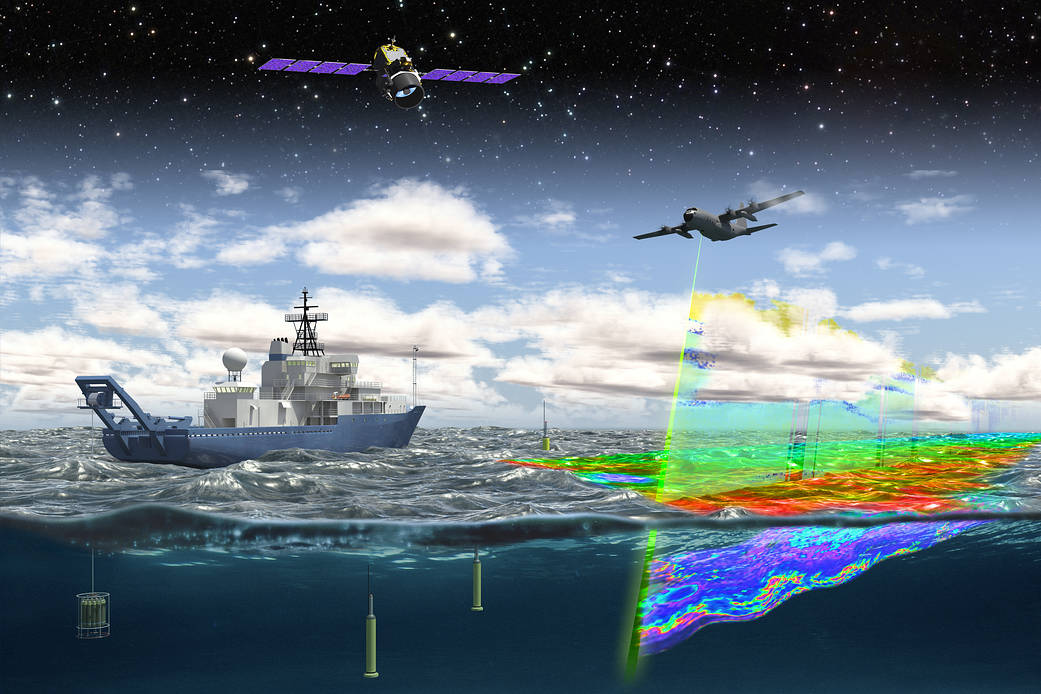About half the carbon dioxide emitted into Earth’s atmosphere each year ends up in the ocean, and plankton absorb a lot of it.
The North Atlantic Aerosols and Marine Ecosystems Study (NAAMES) studies the world’s largest plankton bloom and how it gives rise to small organic particles that leave the ocean and end up in the atmosphere, ultimately influencing clouds and climate.
In 2016, the second of four field campaigns that coincides with a critical phase of the bloom in May, researchers took measurements by sea and air. Between campaigns, satellite data provides a big-picture view.
The mission — which involves space-, ship- and aircraft-based measurements — is using Langley’s High Spectral Resolution Lidar to measure aerosols, clouds and ocean properties.
Credit: NASA
LEARN MORE:Earth Expeditions: NAAMES
All in the NAAMES of Ocean Ecosystems and Climate (2016)Phytoplankton Bloom in the North Atlantic (2015)NAAMES Project at NASA LangleyGetting Social on Deck with NAAMES



























